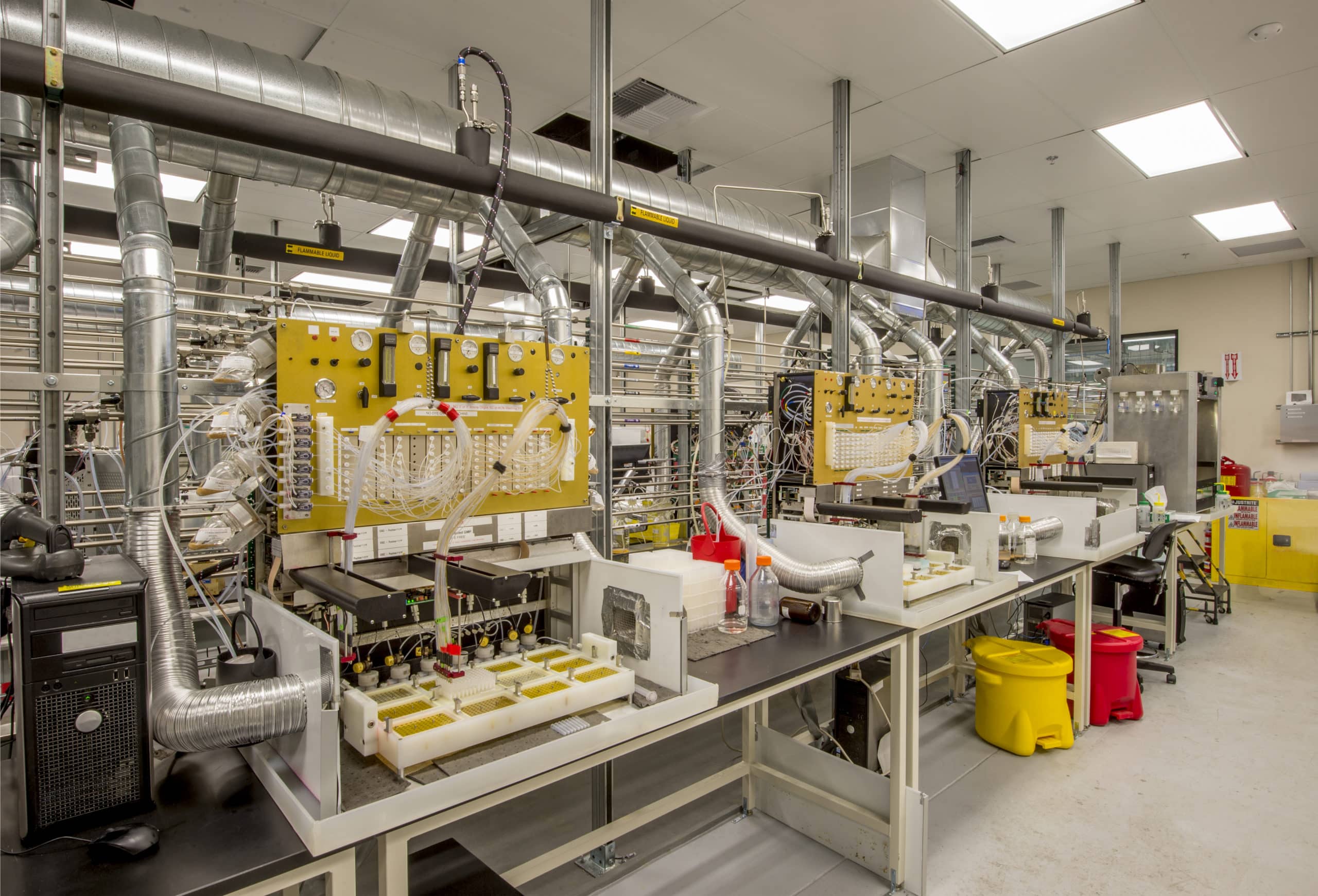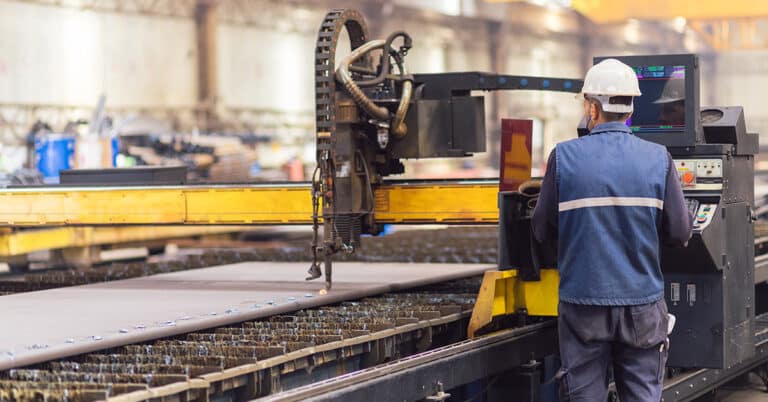Biomanufacturing is one of the most intriguing technologies on the rise today, not least because it presents a bit of a paradox: Biomanufacturing science is driving incredible, unprecedented technological advancements. This is all while being fueled by nature-based tools such as fermentation, enzymes and microorganisms — some of the oldest, most elemental processes of which we know. Biotech manufacturing uses these processes in place of traditional synthetic, energy-intensive processes that are used to create products including plastic, rubber, nylon, etc.
Throughout the rest of this piece, we will look at the biomanufacturing process in more detail — including specific manufacturing functions and industries that it may impact, as well as the benefits of biotech manufacturing.
A closer look: What is biomanufacturing?
Biomanufacturing relies on naturally occurring processes and reactions to produce an output — such as a material, product or chemical, to name a few — that would normally be produced through a synthetic process. In a broad sense, nearly all manufacturing is based on the use of energy, such as heat, to change the form of something. It vastly reduces this energy requirement in favor of production through natural reactions. Incredibly, the biological process on which nearly all biomanufacturing is based is a fairly common one — fermentation. Fermentation makes use of naturally occurring microorganisms and enzymes to carry out reactions. It is the source of some of our most widespread food products, such as bread and beer.
The functions and capabilities of fermentation have been no secret, as the process has been used for thousands of years. As manufacturers search for ways to increase margins, boost sustainability and innovate in productivity, however, researchers and engineers have identified new and creative ways to use fermentation for manufacturing.
As biomanufacturing through fermentation becomes more widespread, the technology also has become more sophisticated. By integrating synthetic biology and genetic engineering, scientists have developed new and more refined microorganisms that are more efficient and effective at their jobs. This has led to the creation of bioreactors that offer greater precision in terms of scalability and control, resulting in reduced energy consumption and a smaller carbon footprint. Because biomanufacturing processes can run effectively nonstop, this offers numerous advantages over traditional batch manufacturing.
Some of the processes in which biomanufacturing can be involved are as follows:
- Raw material production, including plastics, paper and textiles
- Chemical production, using fermentation to develop soaps, detergents and more
- Energy production, generating power from biomass
- Food fortification and enhancement through natural processes as opposed to additives and preservatives
In the next section, we will take a broader view of the industries that are impacted by these functions.
Biomanufacturing across industries
Building on the examples described above, biomanufacturing is already impacting a wide range of industries; that impact is well-positioned to expand. Some of these industries include:
- Building and construction: The use of biomanufacturing in the construction industry has enabled the development of biologically sourced concrete and mycelium-based insulation. The technology even has the potential to lead to self-healing materials in the near future. Beyond the fermentation examples described above, it is used in the construction industry in two primary ways:
- Biocementation: Uses microorganisms to make cement stronger
- Bioremediation: Uses microorganisms to break toxic substances into those that are safe to dispose
- Electronics: Presents exciting possibilities in electronic component manufacturing — including flexible printed circuits and touch sensors as well as internal and external housing components. Biotech is capable of producing paper-thin, flexible plastic-like materials and circuits at a fraction of the energy cost of traditional materials — spurring major innovations in electronics manufacturing. These circuits and components also have the benefit of being biodegradable, solving certain problems pertaining to e-waste. In the future, it may be possible to develop electronic devices that are fully biodegradable which reduce concerns over disposal of obsolete tech and preserve natural resources. Scientists also report progress toward biological computing and DNA data storage, which could have a tremendous impact on the industry.
- Consumer products: Used to produce all manner of consumer goods — e.g., beauty supplies, plastic products and components, nylon, textiles, paper, and more. The use of biotech processes in these fields can yield major benefits in cost and waste reduction. For example, as regulations ban single-use plastics, the development of biodegradable alternatives suddenly becomes an appealing avenue of study. Consumers looking for sustainable alternatives to petroleum-based products and packaging are sure to find these biologically derived plastics more attractive.
- Food manufacturing: The basis of the fermentation process — enzyme and microorganism reaction — has found an ever-expanding suite of uses throughout food manufacturing. This includes:
- Vitamin and amino acid fortification
- Modifications for digestion improvements
- Antimicrobials that can extend the shelf life and safety of food products without artificial preservatives
- Lab-grown meat that could become a viable alternative to traditionally farmed proteins
- Pharmaceutical: The pharma and medical fields are natural fits for biotechnology, especially as the technology becomes more efficient and cost-effective. The life science industry has responded with numerous applications such as medicine and vaccine production, medical device manufacturing, antibacterials, and controlled, on-demand molecule production. Perhaps most exciting is the potential to produce on-demand tissues and even organs through a “3D printing”-like process, creating perfect custom fits for individual patients.
Bioreactor design and optimization
At the heart of biomanufacturing is the bioreactor, which is the vessel in which the biological processes are contained. These devices must be designed to provide the optimal environment for the microorganisms that perform the specific function needed to achieve the desired result. This means they must be calibrated precisely to provide the ideal temperature and pH to allow the organisms to do their jobs as effectively and efficiently as possible. Other considerations include allowing for the proper transfer of heat, oxygen and gaseous byproducts as well as efficient power consumption and removal of the products. As demand for this technology continues to increase, manufacturers are expected to diversify their bioreactor offerings to include more customized designs.
Challenges and solutions in biomanufacturing
As with all new technologies, biomanufacturing still has a number of hurdles to overcome before it achieves the level of acceptance that other methods currently used throughout the industry. For example, there remain certain technical limitations in terms of optimizing yield and the scalability of the process. These issues may be overcome as demand increases and bioreactor manufacturers find new innovations that make the process more flexible.
Another potential stumbling block for biomanufacturing is regulatory and public acceptance of the basic concepts behind it. Fortunately, researchers are collaborating with industry and government representatives to help them understand the basics and see how it can deliver significant benefits. As this becomes a more viable option for manufacturing, the development of standardized protocols and investment in workforce development should help biomanufacturing gain ground and find its place.
Benefits of biomanufacturing
To conclude, we will explore a few of the main benefits that the biomanufacturing industry offers — now and in the future:
- Energy use reduction: As mentioned throughout this piece, biomanufacturing replaces energy-intensive processes with naturally occurring processes that often require only sunlight and a controlled environment to be initiated. Processes such as continuous biomanufacturing — where processes occur on an ongoing basis after an initial catalyzation — further increase energy with a minimum of monitoring. Lower energy usage and costs benefit the environment, as well as manufacturers and consumers.
- Supply chain optimization: One of the most exciting elements of biomanufacturing is how it may be able to reduce supply chain dependencies for many companies. With more production being performed on-site, there could be fewer materials that need to be sourced elsewhere.
- Increased innovation: The advances that we are seeing represent exciting new frontiers — everywhere from the electronics in our pockets to medical developments that may impact public health for the world. The possibilities of this technology — along with the minimal energy use required for research and testing — are providing our best minds with the ideal jumping-off point to innovate across numerous industries and uses.
- Sustainability: In addition to lower energy use, materials and products created through biomanufacturing technology are easier and safer to recycle and dispose. The long-term sustainability of biomanufacturing may be able to solve many of the current problems of waste disposal and toxic material. By reducing the use of fossil fuels, biomanufacturing could become a focus for government incentives aimed at promoting sustainable practices.
Future outlook for biomanufacturing
As the technology continues to mature, there’s every expectation that biomanufacturing will be a larger part of the overall manufacturing landscape in the near future. Its potential to reduce waste and align with global sustainability goals make it an attractive alternative to most other manufacturing processes used today. A biomanufacturing program can create a truly closed-loop manufacturing industry in which products can simply biodegrade over time without harming the environment while reducing greenhouse gas emissions caused by traditional manufacturing activities.
Biomanufacturing is truly one of the most exciting developments in manufacturing today, with its many uses and benefits apparent. It is only poised to continue advancing.






